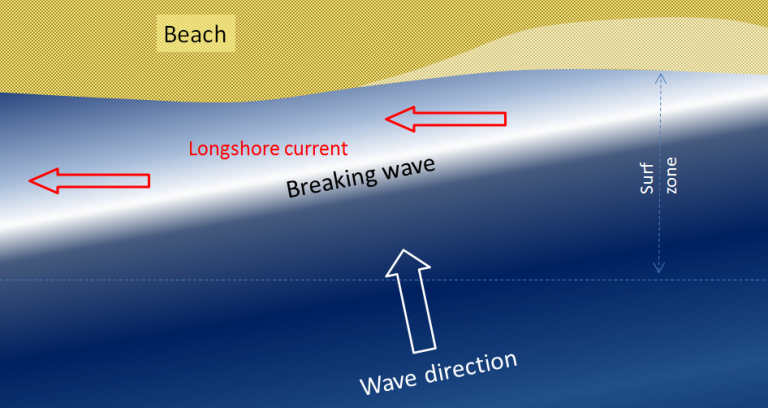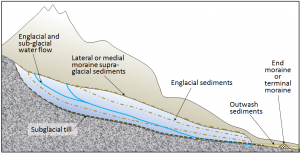Longshore Drift: The Unseen Beach Sculptor Explained!

Understanding Longshore Drift: A Detailed Explanation
At its core, longshore drift is a fundamental coastal process responsible for the movement of vast quantities of sand and other sediment along the coastline. Also frequently referred to as littoral drift, this phenomenon plays a crucial role in shaping beaches, creating landforms, and influencing coastal ecosystems. Understanding longshore drift is essential for coastal management, predicting beach erosion, and comprehending the dynamic nature of our shorelines. It is a continuous process driven by the interaction of waves, wind, and the coastline's geological structure, resulting in the gradual transportation of material along the beach face. The impact of longshore drift is seen on almost every beach in the world.
The Mechanics of Longshore Drift
The process of longshore drift hinges on the angle at which waves approach the shoreline. Waves rarely hit the coast perfectly parallel. Instead, they typically arrive at an oblique angle due to prevailing wind patterns and wave refraction. This angled approach is the first key step in the sediment transport process. As a wave breaks, the swash (the water rushing up the beach) carries sand and sediment up the beach face at an angle. Gravity then pulls the water straight back down the beach as the backwash. Because the backwash travels directly down the slope of the beach, it deposits the sediment slightly further along the coast than where it was picked up by the swash. This zig-zag motion, repeated with each successive wave, results in the net movement of sediment along the coastline, creating the phenomenon known as longshore drift.
Wave Refraction's Role
Wave refraction is a critical factor influencing the direction of wave approach and, consequently, the effectiveness of longshore drift. As waves approach a coastline with varying depths, they slow down in shallower water. This change in speed causes the waves to bend or refract, often aligning them more closely with the shoreline. While complete alignment is rare, refraction tends to reduce the angle at which waves approach, focusing wave energy on headlands and dispersing it in bays. This uneven distribution of energy impacts sediment transport patterns and contributes to the complex interplay of erosion and deposition along the coast. Understanding wave refraction is crucial to predicting where the impact from longshore drift is felt most strongly.
The Importance of Swash and Backwash
The swash and backwash cycle is the engine that drives longshore drift. The swash, with its angled approach, provides the lateral force needed to move sediment along the beach. The backwash, governed by gravity, ensures the return of water perpendicular to the shoreline, preventing the sediment from simply returning to its original location. The difference in direction between the swash and backwash is crucial. Without this difference, there would be no net movement of sediment, and longshore drift would not occur. The interaction between the swash and backwash cycle impacts the type of sediment transport that occurs.
Longshore Current: The River in the Sea
The longshore current is intrinsically linked to longshore drift, and they often are confused. While longshore drift refers to the movement of sediment, the longshore current refers to the movement of water. The longshore current is a current that runs parallel to the shoreline within the surf zone. This current is generated by waves approaching the coast at an angle. As these waves break, they release energy that propels water along the coastline, creating the longshore current. The stronger the waves and the greater the angle of approach, the stronger the longshore current. This current plays a significant role in sediment transport, acting as a conveyor belt that carries sand and other materials along the coast.

| Feature | Description | Role in Longshore Drift |
|---|---|---|
| Waves | Disturbances that propagate energy through water | Provide the initial energy and angled approach for sediment movement. |
| Swash | The rush of water up the beach after a wave breaks | Carries sediment up the beach at an angle. |
| Backwash | The return flow of water down the beach | Pulls water and sediment straight down the beach slope. |
| Longshore Current | A current flowing parallel to the shoreline | Transports sediment along the coast within the surf zone. |
| Beach Erosion | The removal of sediment from a beach system | A potential consequence of longshore drift if sediment removal outpaces deposition. |
The Consequences of Longshore Drift
The impact of longshore drift extends far beyond the simple movement of sand. It has profound implications for coastal geomorphology, affecting the formation and evolution of various coastal landforms. For example, spits, which are elongated ridges of sand extending from the mainland into the sea or a bay, are often formed by longshore drift. As sediment is transported along the coast, it may accumulate in areas where the coastline changes direction, creating a spit. Similarly, barrier islands, which are long, narrow islands running parallel to the mainland, can be influenced by longshore drift. Sediment transported by longshore drift contributes to their growth, migration, and overall stability. Negative consequences are also caused by longshore drift, for example, beach erosion.
Spit Formation
Longshore drift is instrumental in creating spits. These features are formed when the direction of the coastline changes, such as at a river mouth or bay. The longshore current continues to transport sediment across the opening, but the energy dissipates, leading to deposition. Over time, this accumulation of sediment forms a long, narrow ridge of sand extending from the mainland. The shape of the spit can be influenced by wave action and tidal currents, often curving towards the mainland. Spits provide valuable habitats for coastal species and can offer protection to the mainland from wave energy.
Barrier Island Dynamics
Barrier islands are dynamic landforms constantly reshaped by coastal processes, including longshore drift. Sediment transported by longshore drift contributes to the overall sediment budget of barrier islands, influencing their width, length, and migration patterns. In some cases, longshore drift can lead to the growth of barrier islands by adding sediment to one end, while erosion occurs on the other end. This process results in the gradual migration of the island along the coastline. Understanding the role of longshore drift in barrier island dynamics is crucial for managing these valuable coastal resources and protecting them from beach erosion.

Human Intervention and Mitigation Strategies
Human activities can significantly alter natural coastal processes, including longshore drift. Coastal development, such as the construction of harbors, jetties, and groins, can interrupt the flow of sediment and disrupt the natural balance of erosion and deposition. Groins, for example, are structures built perpendicular to the shoreline to trap sediment. While they may protect the beach immediately upcurrent from the groin, they often lead to increased beach erosion downcurrent, as they prevent sediment from reaching those areas. Similarly, dams built on rivers can reduce the amount of sediment reaching the coast, further exacerbating beach erosion. Therefore, careful planning and management are essential to minimize the negative impacts of human intervention on longshore drift. Strategies such as beach nourishment, which involves adding sand to eroded beaches, and the construction of artificial reefs to dissipate wave energy can help mitigate the effects of human activities and protect coastal communities. The impact of interfering with the natural sediment transport process can be far reaching.
| Intervention | Description | Impact on Longshore Drift |
|---|---|---|
| Groins | Structures built perpendicular to the shoreline | Trap sediment on the upcurrent side, but often cause erosion downcurrent. |
| Jetties | Structures built to protect harbor entrances | Can interrupt longshore drift and cause sediment accumulation on one side and erosion on the other. |
| Seawalls | Structures built to protect the shoreline from waves | Can reflect wave energy, increasing erosion in front of and adjacent to the seawall. |
| Beach Nourishment | Adding sand to eroded beaches | Can replenish sediment lost due to longshore drift, but requires ongoing maintenance. |
FAQ: Frequently Asked Questions About Longshore Drift
Here are some frequently asked questions about the coastal process of longshore drift:
Q: What's the difference between longshore drift and longshore current?
A: Longshore drift is the movement of sediment along the coast, while the longshore current is the current of water that flows parallel to the shoreline and helps to transport that sediment.
Q: Is longshore drift always a bad thing?
A: Not necessarily. Longshore drift is a natural process that plays a vital role in shaping coastlines and creating landforms. However, it can contribute to beach erosion in some areas, particularly when human activities interfere with the natural flow of sediment.
Q: Can longshore drift be stopped?
A: It's difficult, and often undesirable, to completely stop longshore drift. While structures like groins can trap sediment, they often have negative consequences downcurrent. The most sustainable approach involves managing coastal development and minimizing human interference with natural sediment transport patterns.
Q: How does longshore drift affect coastal ecosystems?
A: Longshore drift influences the distribution of sand and sediment, which in turn affects the habitats available for various coastal species. Changes in sediment supply can impact the stability of beaches, dunes, and other coastal landforms, altering the distribution of plant and animal communities.